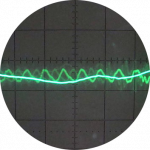Octopus Cosy Heat Pump Owners & Discussion Thread
Great idea. Let's turn this into the go-to thread for all things Octopus Cosy heat pump. It's a really popular model and sharing real-world experiences is the best way for everyone to learn. Share it all.
- The Good: How efficient have you found it? How is your home comfort?
- The Bad: Have you faced any issues or quirks?
- The Setup: What temperatures do you run it at? What's your flow temp and how is your system configured?
- The Cost: How has it impacted your energy bills compared to your old system?
- Any top tips you've learned for getting the most out of it?
Tagging a few members we know have a Cosy to get the ball rolling: @agentgeorge and @wreckguru. If there are any other members with a Cosy heat pump, please reply and I'll update the roll call list.
Get a copy of The Ultimate Guide to Heat Pumps
Subscribe and follow our YouTube channel!
@editor Well, myself as well. I think it would be great if you could get someone from Octopus to talk to you about their technology and design decisions and how this has evolved over the last few years.
Ok, I'll start with what I think is likely to be a controversial statement: "The Cosy series of heat pumps have what I consider a fundamental design flaw". I'll moderate that by saying: "It doesn't stop the Cosys from doing what they need to do - produce heat."
Cosy heat pumps are designed to work with an internal temperature sensor called the Primary Pod (additional sensor pods are provided, up to 4 per zone in total but 3 are passive.) An internal temperature is set in the app and the Primary Pod turns on the heat pump when it senses the temperature is below that value (typically -0.1c) and turns it off again when the temperature is above that value (+0.1c) so there seems to be a built in hysteresis value of +- 0.1c. In effect, the Cosy series works just like a gas boiler turning on and off according to the dictates of the thermostat. It does modulate the flow temperature to the outside air temperature based on the WC curve.
So the impact is that one area of the house, with the Primary Pod, dictates how the house heats. Other rooms will only receive heat (or not) based on the call from the Primary Pod. Where they have a greater heat loss then that room cools down below the desired temp; when it has a lower heat loss the room heat ups above the desired temp.
There doesn't seem to be a way to circumvent this behaviour (there doesn't seem to be a way of ensuring that the Cosy is always on gently heating the home continuously), thus, the Cosy series heat pumps provide no more comfort than a gas boiler with its thermostat controlled approach. Arguably, I could say it is worse: a gas boiler will typically have higher flow temperatures and thus can heat up rooms faster (say when my wife stands on the doorstep chatting with the door open with the internal heat disappearing!) whereas the Cosy, with its lower flow temperature, takes longer. I accept that is a controversial statement!
I've tried, and failed, to get Octopus to confirm exactly how this system works - an engineer confirmed that it works as I suggest but in a manner that suggested "this was a good thing". The best I have had, from other Cosy owners, is:
- balance radiators: well, ok, but differing heat loss is the issue here
- Open doors and let air circulate
- Put the Primary Pod in the coldest room and use the TRVs to dial down temps in rooms that are too warm. I guess this might work but it feels like efficiency would take a bigger hit as the heat pump is likely to cycle on/off more frequently. I don't know how this might affect system volume??
"UpsideDownFork", who runs a youTube channel, suggests it operates similar to Vaillant's "Expanded" mode if that means anything to anyone.
I was really hoping to open this discussion with other Cosy users to see what their experience is and how they run it. In particular: is it possible to set the internal temperature to a max value of 30c and have the heat pump always on trying to (and failing) to reach that temp? Does it work hard to do so or does it reach its set flow temp (for the WC curve) and just simmer at that value, sipping away at my batteries?
Having said that, here's my experience so far.
Mine was installed in May and the installation experience was generally good. The team were only given 4 days to install and in reality it required around 5.5 days. Another team had to come back after 2 weeks to complete it (we had hot water and heating wasn't necessary.) Even then, it wasn't fully tested and that process has just been completed, this week, along with radiator balancing but none of this has been an issue as it wasn't the middle of winter! Given 13 radiators were changed the redecorating work required was minimal (I was pleasantly amazed) and all the engineers were friendly, tidy and worked hard to ensure that the installation went smoothly.
Mostly, it has only been producing hot water and has done so reliably. Heating was turned on around the 16th October and the house is warm so far but it isn't that cold outside right now. I have the internal temperature set at 22c and I don't use a set back at night. I think I can only report on efficiency after winter when it's been through the hardest part of the heating season. My biggest concern is comfort: this operating approach isn't what I expected from a heat pump and I'm really hoping that in conjunction with other Cosy owners I can set it up to work as efficiently as possible whilst remaining comfortable.
The weather compensation curve is a linear line passing through 36c at OAT 12c and 57c at OAT -10c. I haven't adjusted this at all as I have no data yet to determine if it's necessary. The Octopus app provides very little operating data: current sensed temp of the Primary Pod and total input against total output by hour (day view), day (week and month view.) These views also plot the outside temp but no other data is available to customers - I think Octopus themselves can see a lot more. Today, 23rd Oct at 18:00 I can see the heat pump has, so far, used 8.42kWh input with 37.47kWh output.
I also fitted 10kW of solar panels and a 16kW of battery so costs won't be directly comparable to previous years of using gas. The 8.42kWh input would have cost me around £0.60. It's always going to be cheaper for me now but I can look at the SCOP next May and draw some conclusions to report on.
The Good: How efficient have you found it? How is your home comfort?
SCOP is around 3.5, so for the install price this is excellent.
A slightly higher promised SCOP of 4ish from Heat Geek wasn't worth the extra £10k versus the £90/year energy difference.
The Bad: Have you faced any issues or quirks?
The guy who runs the Heat Pump division doesn't like or accept criticism. Very defensive. This makes me wonder if I bought the right product from the right company.
Otherwise everyone I have met from Octopus is great.
The Setup: What temperatures do you run it at? What's your flow temp and how is your system configured?
The data levels are poor, not even the API is as good as the competition.
I have set the curve (straight line) a bit, but what it is doing is hidden. There are loads of sensors but sadly Octopus think they own the data, not the customer.
The Cost: How has it impacted your energy bills compared to your old system?
The cost is cheaper overall, but this is to do with the system. PV, Battery and tariff.
Any top tips you've learned for getting the most out of it?
Don't buy a ASHP without a house battery.
Wreckguru
Posted by: @andrewjI was really hoping to open this discussion with other Cosy users to see what their experience is and how they run it. In particular: is it possible to set the internal temperature to a max value of 30c and have the heat pump always on trying to (and failing) to reach that temp? Does it work hard to do so or does it reach its set flow temp (for the WC curve) and just simmer at that value, sipping away at my batteries?
He would actually delete the thermostats all together and run "pure" weather compensation but as I didn't get a Cosy unit I don't know if that's possible. In theory your Cosy would stop running or more likely settle to a low constant LWT to match the heat loss of your property for any given outside temperature.
This is what I learned this week on a different HP brand now the temps have dropped below my designated minimum outside temperature. Now the HP operation is determined by the average system water temperature through periodically running the water pump in sample mode. Once that temperature drops below my minimum LWT set in the WD curve the pump will operate.
The only way to stop the pump thereafter is to define a setback schedule assuming the heat pump output closely matches your properties heat loss.
@wreckguru, thanks for the summary. @wreckguru has also documented his journey here for others that are interested: https://renewableheatinghub.co.uk/forums/renewable-heating-air-source-heap-pumps-ashps/my-octopus-cosy-6-heat-pump-journey-from-quote-to-completion
Get a copy of The Ultimate Guide to Heat Pumps
Subscribe and follow our YouTube channel!
Posted by: @wreckguruThe Good: How efficient have you found it? How is your home comfort?
SCOP is around 3.5, so for the install price this is excellent.
A slightly higher promised SCOP of 4ish from Heat Geek wasn't worth the extra £10k versus the £90/year energy difference.
@wreckguru That was my thoughts as well (although a £12k difference in price).
Have you tried running your Cosy by upping the requested temperature and letting it ride on the WC curve? How have you managed to normalise room temps on just the Primary Pod?
Posted by: @andrewjHow have you managed to normalise room temps on just the Primary Pod?
The secret to this is (a) turn all or most of the TRVs to maximum and (b) balancing the radiators. Same as any open loop heating.
Its a bit tedious to do but its a once only job. @toodles has written a good article on it.
Once done you get cosy (and Cosy) throughout the house.
4kW peak of solar PV since 2011; EV and a 1930s house which has been partially renovated to improve its efficiency. 7kW Vaillant heat pump.
Posted by: @jamespaThe secret to this is (a) turn all or most of the TRVs to maximum and (b) balancing the radiators. Same as any open loop heating.
Its a bit tedious to do but its a once only job. @toodles has written a good article on it.
Once done you get cosy (and Cosy) throughout the house.
I have the radiators balanced and all TRVs fully open. I wanted to understand more about how the Cosy actually worked, seeing if anyone else had tried to set it up to run continuously, what other Cosy owners experience was.
I have no overnight setback temp and try and maintain a 22c temp. This morning (24th Oct), the heat pump input power was:
00:00-01:00 1.13kWh OAT 7.3c
01:00-02:00 0.28kWh OAT 5.7c
02:00-03:00 1.75kWh OAT 4.6c
03:00-04:00 0.07kWh OAT 5.1c
04:00-05:00 2.38kWh OAT 5.10c (hot water - schedule set at 04:00-05:30)
05:00-06:00 2.43kWh OAT 5.00c (I would guess some hot water and heating)
06:00-07:00 0.35kWh OAT 5.8c
07:00-08:00 1.74kWh OAT 4.5c
Some of these input powers seem high (on the basis of no experience yet!!) given the hysteresis of +-0.1c of the Primary Pod sensed temp for turning on/off the heat pump.
Posted by: @andrewjSome of these input powers seem high (on the basis of no experience yet!!) given the hysteresis of +-0.1c of the Primary Pod sensed temp for turning on/off the heat pump.
Between 0 and 4 it appears to be cycling with an average power in of 0.8kW and an OAT of 5C. Why do you think this is high. It suggests about 3kW to house, so a house loss of perhaps 6kW at -3. Is that reasonable?
It would be better if it weren't cycling, but whether that's possible depends on house loss in relation to heat pump capacity and also whether the room temp target is controlling it or weather compensation.
4kW peak of solar PV since 2011; EV and a 1930s house which has been partially renovated to improve its efficiency. 7kW Vaillant heat pump.
Posted by: @jamespaBetween 0 and 4 it appears to be cycling with an average power in of 0.8kW and an OAT of 5C. Why do you think this is high. It suggests about 3kW to house, so a house loss of perhaps 6kW at -5. Is that reasonable?
It would be better if it weren't cycling, but whether that's possible depends on house loss in relation to heat pump capacity and also whether the room temp target is controlling it or weather compensation.
Like I said in my earlier post above, the Cosy is designed to operate in a cycling manner: that is, it is controlled solely by the temperature reading of the Primary Pod with a hysteresis of +-0.1c. I don't know if it's high power usage or not (on an average basis perhaps not) but certainly some individual hours seem high to me given that each of those hours it was supposedly maintaining the internal temp on the same basis - can a 1c difference in temp make that much difference?
Posted by: @andrewjLike I said in my earlier post above, the Cosy is designed to operate in a cycling manner: that is, it is controlled solely by the temperature reading of the Primary Pod with a hysteresis of +-0.1c. I don't know if it's high power usage or not (on an average basis perhaps not) but certainly some individual hours seem high to me given that each of those hours it was supposedly maintaining the internal temp on the same basis - can a 1c difference in temp make that much difference
Yes if it results in the heat pump being cycled on and off, which clearly it does. In this circumstance it's the average you need to think about which is 0.8kW consumption. It's on-off control not proportional control.
4kW peak of solar PV since 2011; EV and a 1930s house which has been partially renovated to improve its efficiency. 7kW Vaillant heat pump.
- 26 Forums
- 2,364 Topics
- 53.6 K Posts
- 134 Online
- 6,029 Members
Join Us!
Worth Watching
Latest Posts
-

@agentgeorge Alternatively …. Use cheapest tariff times...
By Toodles , 28 minutes ago
-

@majordennisbloodnok Education, Education, Education…
By Toodles , 2 hours ago
-

RE: Setback savings - fact or fiction?
Exactly. We only need to compare conditions, to decide ...
By cathodeRay , 5 hours ago
-
RE: Balancing financial efficiency and comfort using the Octopus Cosy tariff
I found because I have very low heat loss I can set bac...
By RadWhisperer , 8 hours ago
-
RE: Need Help Optimising My Rushed ECO4 Install: 12kW Bosch Heat Pump
Welcome @mickamills We too have an oversized 12kW Sa...
By Old_Scientist , 14 hours ago
-
RE: My Powerwall 3 Consumes 3-4 kWh/Day in Self-Consumption: Is This Normal?
@caron I can confirm that the power usage of the PW3 is...
By Old_Scientist , 15 hours ago
-
RE: Octopus Cosy Heat Pump Owners & Discussion Thread
@andrewj they will release smarter controls, its been m...
By swwils , 18 hours ago
-
RE: Speedcomfort radiator fans
Thats true, but having tried (and succeeded) in constru...
By JamesPa , 18 hours ago
-
RE: Solis S6-EH1P8K-L-PLUS – Why I Chose It and What I’ve Learned So Far
@bash brilliant, thanks for the feedback
By energy9165 , 20 hours ago
-

RE: Heat Pump Heats the House… But It’s Not Cosy. Emitter Changes or System Tweak?
@alastair There I was, feeling grumpy, he said “Cheer u...
By Toodles , 22 hours ago
-
RE: Grant Aerona: Is there a setting to keep the 2-port valve open during pump blockade
Depends on OAT. Mine cycles at OAT>10 and of course...
By JamesPa , 23 hours ago
-
RE: New Fogstar 15.5kWh upright solution
@transparent My conclusion is as you have noted, tha...
By Bash , 24 hours ago
-
RE: Mitsubishi Ecodan R290 10kW performance
And to you too. Wishing you a very enjoyable festive s...
By Sheriff Fatman , 1 day ago
-

RE: External pipework insulation
They do? But that isn't apparent from the photos we'r...
By Transparent , 1 day ago
-

RE: Say hello and introduce yourself
@velcro welcome to the forums. Please feel free start a...
By Mars , 2 days ago
-
Daikin EDLA11D3V3 DHW Settings
I have a newly installed EDLA11D3V3 which I'm still get...
By Velcro , 2 days ago
-
RE: Midea ASHP – how to set weather compensation
@curlykatie did you get sorted with this?
By MickaMills , 2 days ago
-
RE: MyVaillant Connect Regular Disconnect
Thanks. Yes, if the time is consistently 11pm every nig...
By buckwem , 3 days ago





